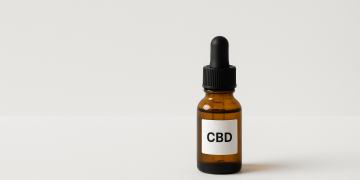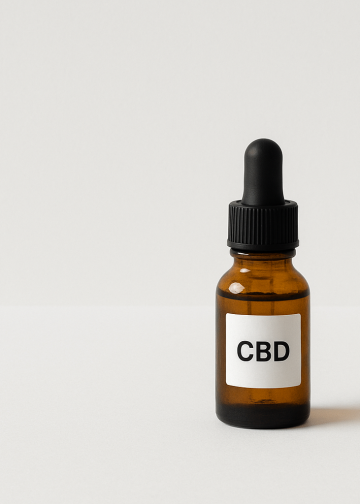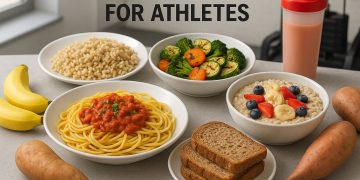Salads are a significant feature of mostly healthy lifestyles, but the wrong dressing may all too quickly turn them into a sodium -laden meal. Most pre-packaged salad dressings are high in sodium to add flavour and to preserve the dressing for many months, and some salad dressings might contain more than half the daily sodium allowance in just two tablespoons of dressing. Low sodium salad dressings are an acceptable alternative because you can still enjoy the fresh vegetables, lean proteins, and grains, without all the sodium, and typically it is easy and inexpensive to make your own salad dressing. With the right ingredients – herbs, citrus fruits, and vinegar – salad dressings can provide a myriad of flavour profiles and enhance any salad and it supports cardiac health, while you maintain a balance between your food habits and your lifestyle.
Why Sodium Matters in Salad Dressing
- The American Heart Association recommends no more than 2,300 mg of sodium per day, with an ideal limit of 1,500 mg for most adults.
- Many bottled salad dressings contain 250–400 mg of sodium per serving, which adds up quickly.
- High sodium intake is linked to hypertension, kidney strain, and increased risk of stroke and heart disease.
- Choosing low sodium dressings helps reduce these risks while still making salads enjoyable.
Key Ingredients in Low Sodium Salad Dressings
- Citrus Juices (Lemon, Lime, Orange): Add tanginess and freshness without salt.
- Vinegars (Balsamic, Apple Cider, Red Wine): Offer acidity and depth of flavor.
- Fresh Herbs (Basil, Cilantro, Dill, Parsley): Provide aroma and flavor complexity.
- Spices (Black Pepper, Cumin, Paprika): Build boldness without sodium.
- Olive Oil and Healthy Fats: Create richness while supporting heart health.
- Yogurt or Avocado: Add creaminess without relying on salty additives.
These ingredients ensure taste variety while keeping sodium levels low.
Benefits of Low Sodium Salad Dressings
- Supports Heart Health: Reduces strain on blood pressure.
- Maintains Kidney Function: Lowers risk of kidney disease from sodium overload.
- Weight Management: Many recipes are lighter and use healthier fats.
- Flavor Enhancement: Encourages the use of natural herbs and spices.
- Customizable: Easy to adjust sweetness, tanginess, or creaminess to preference.
Homemade Low Sodium Salad Dressing Ideas
Creating your own salad dressing at home is one of the best ways to control sodium. Here are a few popular styles:
1. Classic Vinaigrette
- 3 tbsp olive oil
- 1 tbsp balsamic vinegar
- 1 tsp Dijon mustard (low sodium)
- Black pepper and garlic powder to taste
2. Lemon Herb Dressing
- Fresh lemon juice
- Extra virgin olive oil
- Fresh dill, parsley, and basil
- A touch of honey for balance
3. Creamy Avocado Dressing
- ½ ripe avocado
- 2 tbsp plain Greek yogurt
- Lime juice
- Fresh cilantro
4. Garlic Yogurt Dressing
- Low fat plain yogurt
- Minced garlic
- Cucumber for freshness
- Fresh dill
5. Honey Mustard Low Sodium Dressing
- 2 tbsp Dijon mustard (low sodium)
- 1 tbsp honey
- 2 tbsp apple cider vinegar
- 2 tbsp olive oil
- Black pepper to taste
6. Tahini Lemon Dressing
- 2 tbsp tahini
- Juice of 1 lemon
- 1 tbsp olive oil
- 1 clove garlic (minced)
- Water to thin as needed
7. Cucumber Mint Yogurt Dressing
- ½ cup plain low-fat yogurt
- ¼ cup grated cucumber
- 1 tbsp fresh mint, chopped
- 1 tbsp lime juice
- Ground black pepper to taste
8. Apple Cider Vinaigrette
- 3 tbsp apple cider vinegar
- 2 tbsp olive oil
- 1 tsp honey
- 1 tsp Dijon mustard (low sodium or no-salt added)
- Freshly ground black pepper to taste
9. Ginger Sesame Dressing
- 2 tbsp rice vinegar
- 1 tbsp sesame oil
- 1 tbsp low-sodium soy sauce or coconut aminos
- 1 tsp grated fresh ginger
- 1 tsp honey or maple syrup
10. Roasted Red Pepper Dressing
- 1 roasted red bell pepper (peeled and chopped)
- 2 tbsp olive oil
- 1 tbsp lemon juice
- 1 garlic clove, minced
- Fresh parsley, chopped
Tips for Making Flavorful Low Sodium Salad Dressings
Crafting flavorful dressings with no salt added is simple when using other flavor enhancers. For example, fresh juice from lemon, lime, and even oranges helps mimic the brightness and acidity paired with the punch from the sodium. Fresh herbs add vibrant and colorful flavor, and different kinds of vinegar such as balsamic, apple cider, and rice add great flavor and depth. Balancing out the vinegar's acidity with a natural sweetener such as honey, syrup, or fruit puree works. Sweeteners assist towards the gaps and give layered flavor. For creaminess, dishes can include Greek yogurt, Tahini, or even avocado, all great flavor options with no added sodium. It's even a good suggestion to create small batches of dressings to refrigerate. Homemade dressings are great with a shelf life of three to five days, all depending on the ingredients added. Serving is as easy as whisking or shaking the jar. Seasoning, cumin, smoked paprika, and even chili flakes can deepen flavor without the need of salt. And lastly, tweaking dressings is as easy as always giving a sample before adding salt.
Common Mistakes When Making Low Sodium Dressings
A common concern when making health-conscious salad dressings is their sodium content, which is usually too high due to many people using flavored yogurts, soy sauce, mustard, and other sodium-packed ingredients dressed up as “healthy” foods which directly defeat the purpose of the dressings. Another mistake is overusing fat and sugar to counter the saltiness which decreases the dressing's health benefits and reduces nutrition. Lastly, many individuals add too much sugar or too much acid and the balance of the two is not taken into account, resulting in a completely tasteless blend of the two which is neither too sweet nor too tangy. To counter all mentioned problems, the use of fresh zest, natural citrus, and spices is to be relied upon to provide a balanced mix of health and flavor.

FAQs
Q1: What is a low sodium salad dressing?
Any salad dressing that has 140mg of sodium or less.
Q2: Can I make creamy low sodium dressings?
Yes, use Greek yogurt, avocado, or tahini as a creamy base instead of mayonnaise.
Q3: Will low sodium dressings taste bland?
No way, you can have a bright and lively flavor without salt using fresh herbs, citrus, garlic and vinegar.
Q4: Are low sodium dressings purchased from the store healthy? Sometimes, but always read the sodium and added sugars on the label.
Conclusion
Low sodium salad dressings show that flavor and health can indeed coexist. You can develop dressings that enhance salads and dress up vegetable side dishes all without adding salt, using fresh ingredients like herbs and citrus, vinegar, and healthy fats, along with your favorite foods with their own flavor. Whether it's your homemade vinaigrette, a fun creamy yogurt based concoction, or one you bought from the store (which you can now do so more thoughtfully), you can develop so many delicious and heart healthy ways to enjoy dressings; only a minimal reduction in sodium will lead to valuable cardiovascular benefits, and it can incentivize your own creativity as a cook in your kitchen. All of these new at home cooks discover that they too can reduce sodium, can enjoy all their salads savory and healthy with a sustainable balance to a healthful lifestyle.

























